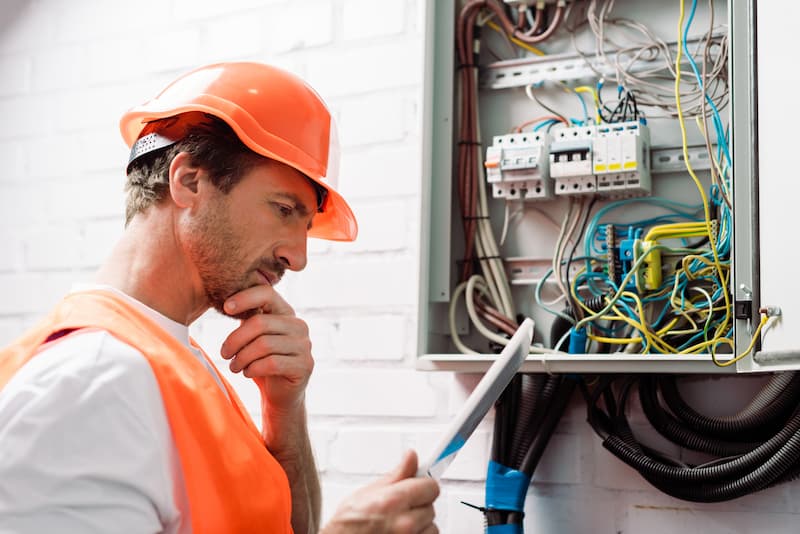Business-focused mechanical engineering industry support solutions.
Top Tips for Effective Electrical System Troubleshooting
Fixing electric systems calls for a systematic strategy, based in a thorough understanding of electric principles and safety procedures. By familiarizing oneself with circuit components, making use of important devices, and sticking to an organized analysis method, professionals can successfully recognize and fix concerns. The subtleties of effective troubleshooting prolong beyond simple technological understanding; understanding just how to document searchings for and prioritize security can considerably influence end results. As we explore these essential aspects better, it becomes clear that mastering this process is not just advantageous however necessary for success in the area.
Understand the Fundamentals
Understanding the basics of electrical systems is important for effective troubleshooting, as a solid structure permits professionals to detect and settle concerns more successfully. A comprehensive grasp of electric concepts, such as voltage, present, resistance, and power, is crucial in identifying the origin triggers of issues. Voltage is the electrical possible difference that drives existing through a circuit, while resistance opposes the flow of existing, impacting the overall performance of the system.
Knowledge with circuit parts, consisting of resistors, capacitors, diodes, and switches, is likewise extremely important. Each component plays a distinct duty in circuit behavior and can influence performance when malfunctioning. In addition, understanding collection and parallel circuit setups is vital, as these arrangements influence the circulation of voltage and current within the system.
In addition, knowledge of safety procedures is crucial. Specialists have to be aware of prospective hazards, such as shock and brief circuits, to execute safe troubleshooting techniques. By mastering these foundational concepts, professionals improve their capacity to conduct efficient diagnostics and fixings, inevitably leading to improved efficiency and integrity of electric systems. This foundational knowledge is the keystone of successful repairing endeavors.
Gather Necessary Devices
Effective troubleshooting of electrical systems calls for the best collection of tools to diagnose and settle problems accurately. Crucial tools include a multimeter, which gauges voltage, present, and resistance, allowing for exact evaluations of electrical elements.
In addition, insulated hand devices such as screwdrivers, pliers, and wire strippers are critical for securely adjusting electrical connections. It is additionally recommended to have a circuit tester handy to verify the existence of voltage in outlets and cables. For even more complicated systems, a thermal imaging video camera can aid spot overheating elements, suggesting possible failings.

Follow an Organized Technique
Having actually collected the proper devices, the following action in troubleshooting electrical systems is to follow a systematic technique. A methodical method makes sure that professionals can recognize faults efficiently and properly, minimizing downtime and preventing unnecessary repairs.
Begin by reviewing the system's schematic diagrams and requirements. This includes checking each element systematically, starting from the power resource and working in the direction of the load.
Make use of screening equipment, such as multimeters and oscilloscopes, to gather unbiased data concerning voltage, current, and resistance at various points within the system. This empirical proof will lead your troubleshooting initiatives and help to verify or remove possible causes of failing.
Furthermore, consider ecological aspects that might influence the system's efficiency, such as temperature level variations or moisture access. An extensive inspection of electrical wiring, links, and parts will certainly make sure that all possibilities are represented.
Record Your Findings
Detailed documents is essential in the fixing process of electrical systems. Exact records improve the performance of recognizing repeating problems and assist in interaction among staff member. Each finding needs to be meticulously noted, consisting of symptoms find out here now observed, tests performed, and the end results of those examinations. electrical system troubleshooting. This technique not just help in recognizing the origin of the problem but likewise works as a reference for future troubleshooting initiatives.

Additionally, keeping a log of parts changed or repairs executed is important. This details supports supply administration and can assist evaluate the longevity and integrity of particular components.
Ultimately, the documentation procedure must be thorough yet concise, making it possible for very easy retrieval and evaluation - electrical system troubleshooting. By focusing on in-depth documents, specialists can develop a valuable expertise base that not only help in present troubleshooting but also encourages future maintenance efforts, therefore boosting overall system dependability

Prioritize Safety And Security Procedures
Acknowledging the inherent dangers linked with electrical systems is vital for ensuring security during troubleshooting. Electrical shock, burns, and equipment damages are simply a few of the potential dangers that professionals encounter. Prioritizing precaution is not only a legal responsibility yet also a moral crucial that safeguards both the technician and the surrounding setting.
Prior to commencing any kind of troubleshooting job, specialists must don suitable individual safety devices (PPE), consisting of insulated handwear covers, shatterproof glass, and flame-resistant garments. Ensuring that the workplace is dry and devoid of clutter can considerably lower the risk of crashes. Additionally, it is important to de-energize circuits prior to starting any work, confirming that they are not endure making use of a multimeter or voltage tester.
Establishing clear interaction protocols with employee is additionally crucial; this makes sure that everyone understands possible risks and the condition of the electrical system being worked on. Finally, find more information having an emergency situation action plan in position can show important in case of an incident. By focusing on precaution, professionals can successfully alleviate dangers and foster a much safer work environment.
Final Thought
Effective electrical system troubleshooting depends on an extensive understanding of essential principles and a systematic strategy. By collecting vital tools, adhering to methodical examination methods, and thoroughly documenting searchings for, the troubleshooting process comes to be a lot more efficient and trusted. Prioritizing precaution guarantees the wellness of people included and the honesty of the electric system. Executing these approaches will boost the troubleshooting experience, causing quicker resolutions and boosted operational performance in electric systems.